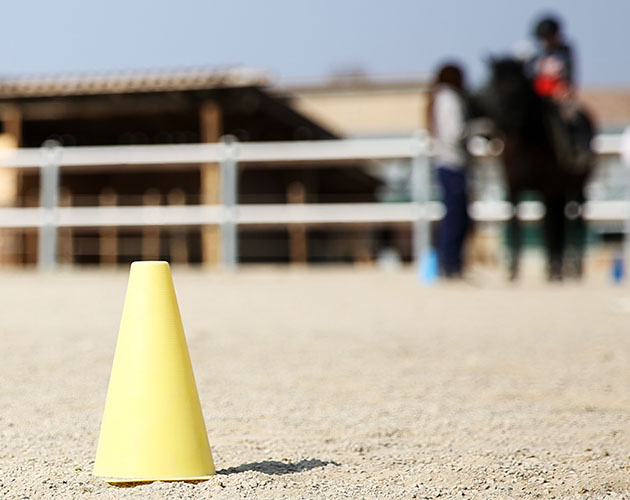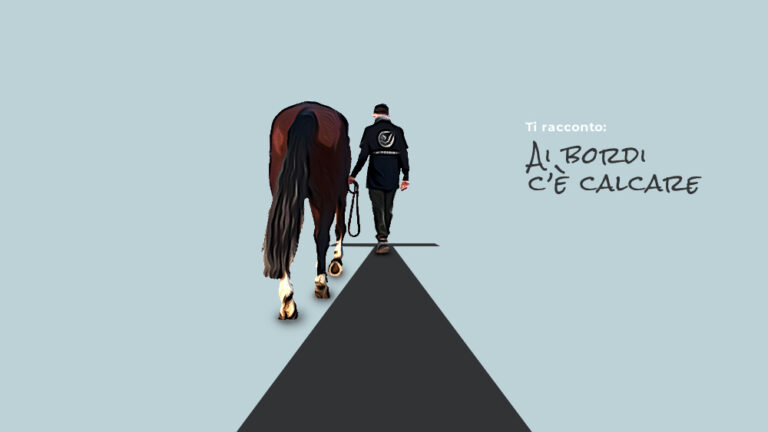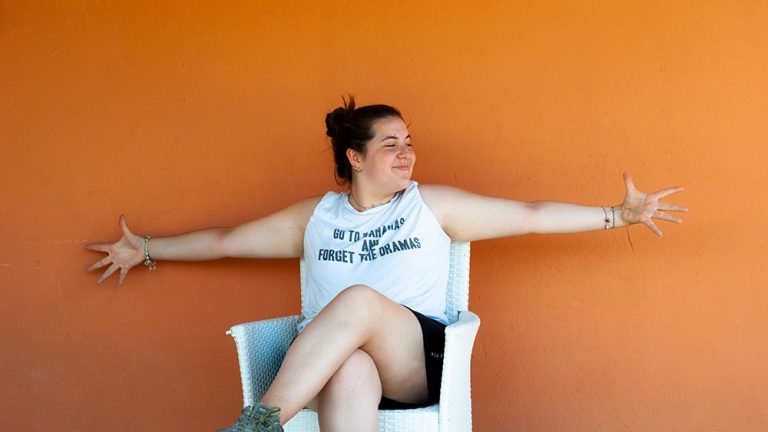I am Elisabetta, a twenty-five-year-old woman who has been blind since birth due to prematurity.
For about a year now, I have been attending I’m Possible to take horse riding lessons, both in the saddle and in the carriage. Did you know that these approaches to horses have some elements in common? For example, in both cases, the activity begins with the primary goal of caring for the animal, which involves various steps: first, leading it from the enclosure to the porch in front of what I imagine as a house, and once tied under the shelter, cleaning it before saddling or preparing it for the carriage.

What does the horse represent to you?
For me, the horse represents happiness and carefreeness. It’s the ability to take care of an animal that, despite initially frightening me, no longer does so: I’ve learned to understand it, and it’s teaching me to understand myself. It has made me realize how it feels to be useful to someone and has shown me different behaviors that are also useful in relationships between people, an aspect that is emphasized within the context of I’M Possible.
What have you found at I’M Possible?
Well, I feel appreciated for who I am. I know I can open up to discussion and potential changes without having to force myself to show a falsified part of me. By saying this, I mean that no one rushes me to achieve goals, and I am free to do activities proposed to me in the best possible way as well as to express any form of discomfort.
How did you come across our ASD APS?
I should say that in the past I had already taken horse riding lessons, as well as a series of pet therapy projects when I was in high school, mainly to overcome my fear of dogs. As I grew up, I regained interest in animals and felt like trying horseback riding again. Thanks to word of mouth – imagine, a colleague of my mother’s, whose daughter volunteers with horses – I became aware of I’M Possible. And from there, intrigued by the story of this reality, I made my first visit to the place. I still remember it: I was under my mother’s arm, on a very hot summer afternoon!
What were the first steps?
Once I arrived, and after sharing the path to take and the goals to achieve, I remember asking right away to be able to ride despite having a great fear due to the noises of the horse. I think, for example, of the simple clattering of hooves on the ground when Lara, the mare, had to shake off the flies from her body in the middle of summer. Probably this fear of mine was due to the fact that, not seeing the gestures of the animal but only hearing the sound, I didn’t understand if it wanted to convey some sensation, pain or happiness, or if it was trying to perform an action for itself, or towards others, in the case of the neigh.
When did you stop being afraid?
I started to no longer feel this sense of fear approximately fifteen days after the first contact. I couldn’t say exactly what helped me the most, but certainly feeling welcomed and listened to from the start encouraged me to feel comfortable. Additionally, the increasingly deeper knowledge of the surrounding environment and the animals that inhabit it, such as horses, goats, donkeys, hens, and roosters, completed the process.
What was one of the main goals you set for yourself?
From the beginning, I sought a way to make myself as independent as possible both in handling the animal and in the riding field or carriage. Regarding the first aspect, I began to progressively gain autonomy by familiarizing myself with the tools used for grooming: currycomb, brush, and hoof pick—although, with the latter, I still don’t feel completely confident because I’m always afraid of being kicked and not knowing how to lift the horse’s hoof to clean it properly. As for carrying out the lessons, particularly in the riding field, I am starting to manage on my own, aided by a tactile drawing of the space that represents it not only in its shape but also with the number of horse steps indicating the length of each side.
During the lessons, how do you feel?
Recently, I’ve started to feel even more free on horseback: they are teaching me to guide him and understand how to make him turn or stop, and I know that in the future, this will allow me to do things, albeit under supervision, completely on my own.
How do you manage to orient yourself?
To understand where I am, I rely on elements provided by the situation, such as the sun or the noise of the highway, and I constantly check them to see if I’m heading in the right direction; if I make a mistake, for example by turning too much, I realize it because I’ve moved too far from these auditory cues, and I’ve learned, through corrections, that it all depends on how commands are given to the horse and the attention paid to it.
Talking about the driving sessions, how is it going?
When I’m driving carriages, I always fear not performing the operations correctly, perhaps because I do it less often than riding. However, with the same feelings, I prefer it to riding: not being a passive presence on a vehicle makes me feel important, like I have a role that makes a difference.
How do you judge your journey so far?
I feel happy, especially because I’m starting to feel independent and to believe more in myself; indeed, I believe that going to riding lessons in that environment leads me to increase my self-esteem and confidence in my abilities.




